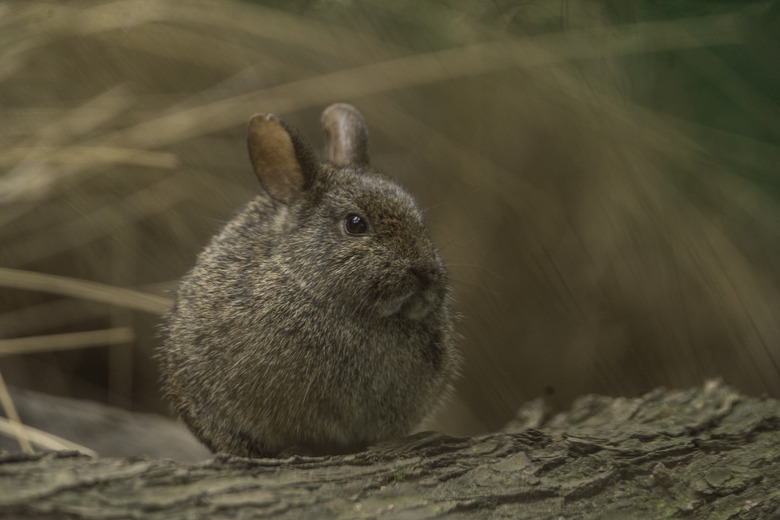How To Tell How Old A Wild Bunny Is
While there's no surefire way to tell a wild bunny's exact age, certain characteristics of wild rabbits can help you estimate how old they are. From the amount of fur they have to their size and whether or not their eyes are open, small signs can help you figure out a wild rabbit's age. Different rabbit breeds in the wild can be different sizes.
If you find a baby rabbit in the wild on his own and he is not hurt, he should be left alone. If he looks injured or seems to be a domestic rabbit that was abandoned, contact your local humane society for advice. It can direct you to a wildlife rescue in your area. Do not take in wild rabbits, as they do not thrive in captivity.
Baby wild rabbit characteristics
Baby wild rabbit characteristics
When a baby rabbit is 3 weeks old, she will leave her nest and venture out into the world. At this age, rabbits are about the size of a softball. Despite their small stature, they are ready to be independent and go out on their own. You can usually tell that a baby rabbit is younger than this if she is smaller. Before 3 weeks of age, her fur may be patchy and light since rabbits are born hairless. Their eyes may not yet be open. Rabbit babies open their eyes at around ten days old.
A wild baby rabbit younger than this or a rabbit in general should not be disturbed by humans unless she is injured. Mother rabbits put their nest in the open, so it is unlikely that the babies are abandoned. They leave during the day often to get food for themselves and tend to stay away from the nest so predators aren't attracted to it due to her smell. Most of the time, when mom is away, she is out foraging and will later return to care for and nurse her babies.
When rabbits reach maturity
When rabbits reach maturity
If a wild bunny has a full coat of fur and has his eyes open, it's likely older than 3 weeks. If you watch his behavior and see him trying to hop, that's another sign that he's no longer a baby. Unlike domesticated rabbits, wild ones don't live for a long period of time. Rabbits kept in captivity can live up to 10 years, but those outdoors usually live to be about 15 months old.
They thrive and have a better quality of life in the wild, but their many predators keep their life span on the shorter side. Rabbits who live in more wooded areas have higher odds of survival. They can better hide from predators in areas with more brush and foliage.
Wild bunny babies and gestation
Wild bunny babies and gestation
In most areas, rabbits breed in fall and spring and hibernate in the cold months. While 44 percent of cottontail rabbits die during their first month of life, the surviving bunnies begin parenthood young, first becoming pregnant between 2 and 3 months of age. With an approximately 30-day gestation, wild rabbits tend to have multiple litters per year with one to 12 babies born each time.
If you notice the baby rabbit is injured, is bleeding, seems sick, or seems to be orphaned — which is rare — a wildlife rehabilitator can rescue the rabbit or give you suggestions for how to help. When rabbits are orphaned, less than 10 percent will survive beyond a week despite efforts by humans to help. While people may mean well, their help can cause problems for these young rabbits.
References
- The Wildlife Center of Virginia: Baby Rabbit
- Indiana House Rabbits Society: Wild Rabbits
- Porter County Parks & Recreation: Springtime Babies: Rabbits
- People for the Ethical Treatment of Animals: Living in Harmony With Wild Rabbits
- WildlifeHelp: What Should I Do if I Find an Orphaned or Abandoned Baby Rabbit (Bunny)?
- The Forest Preserve District of Will County: Breeding Like Rabbits? What Does That Mean Anyway?
- New England Cottontail: Breeding and Lifespan
